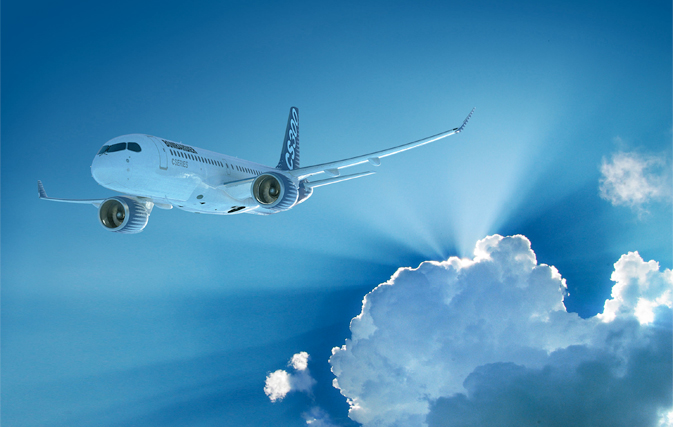MONTREAL — Air Canada is moving ahead with its narrowbody fleet renewal program and expanding its hub and network growth with a letter of intent to purchase up to 75 Bombardier CS300 aircraft.
The airline has signed on for 45 firm orders plus options to purchase up to an additional 30 aircraft and includes substitution rights to CS100 aircraft in certain circumstances.
Deliveries are scheduled to begin in late 2019 and extend to 2022.
The first 25 aircraft on delivery will replace Air Canada’s existing mainline fleet of Embraer E190 aircraft, with the incremental aircraft supporting Air Canada’s hub and network growth, creating one of the world’s youngest, most fuel efficient airline fleets.
“We are delighted to announce this important agreement with Bombardier for the purchase of CS300 aircraft as part of the ongoing modernization of Air Canada’s narrowbody fleet,” said Air Canada President and CEO Calin Rovinescu. “With its high fuel efficiency performance and greater seating capacity, the next generation technology of the C Series is very well suited for our current and future network strategy and will be an extremely efficient addition to our fleet. The renewal of our North American narrowbody fleet with more capable and efficient aircraft is a key element of our ongoing cost transformation program – plus the enhanced passenger cabin comfort provided by the CS300 will help us to retain Air Canada’s competitive position as the only Four-Star international network carrier in North America.”
The entry of the C Series into Air Canada’s fleet is expected to yield significant cost savings, he added. The projected fuel burn and maintenance cost savings (on a per seat basis) tops 15% and should generate an estimated CASM reduction of approximately 10%, when compared to the aircraft it will replace, said Rovinescu.
Meanwhile Air Canada has reported record operating income of $1.496 billion in 2015, an increase of $681 million or 83.6% from the 2014 record. Earnings before interest, taxes, depreciation, amortization and aircraft rent (EBITDAR) amounted to $2.534 billion compared to $1.671 billion in 2014.
The 2015 stats were the best financial results in Air Canada’s history for a second year in a row. “Our results reflect the significant progress being achieved through our various value-enhancing initiatives, including fleet modernization, international expansion, the roll-out of rouge and our network diversification,” said Rovinescu, adding “our plan is not dependent on fuel prices staying at current levels, and the transformative changes we’ve made in recent years provide us with a cost structure, fleet and flexibility to respond, as we did in 2015, to competitive market conditions, fluctuations in the Canadian dollar and to economic weakness.
“Moreover, we have a proven track record of proactively managing and allocating capacity to meet demand, as we did last year upon seeing signs of weakness in Western Canada, and we will continue to adjust capacity to maximize profitability.
“Looking forward, we are committed to maintaining the strong momentum that we achieved in 2015 and we remain firmly on track to execute on all of our key objectives.”

